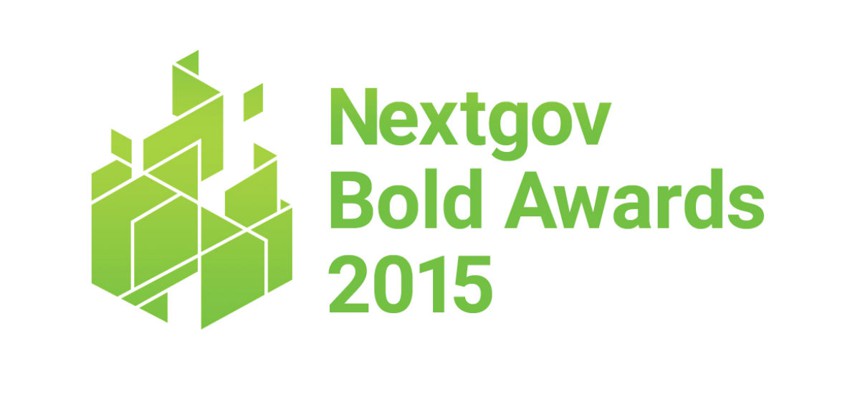2015 Bold Awards Recognize Government Innovators

From more than 1,000 nominees, Nextgov’s editorial team selected 10 winners who took strategic risks to boost their agency’s technological prowess.
An open-source digital tool for crisis responders, a state-of-the-art relaunch of a health data repository and a security-vetting tool for the Defense Department following the horrific Washington Navy Yard shooting.
These were only a handful of the many talented federal and industry innovators recognized Wednesday at the third annual Nextgov Bold Awards.
Out of a pool of more than 1,000 talented nominees, Nextgov’s editorial team selected 10 winners who have taken strategic risks to boost their agency’s technological prowess. The event also honored one member of the federal workforce selected by the public to receive the "People’s Choice Award."
“Those who made the cut prove that the federal government is full of bold, innovative federal employees who are disrupting the status quo,” said Nextgov Executive Editor Camille Tuutti at the awards ceremony Wednesday at the Nextgov Prime 2015 conference in Washington, D.C.
For the first time, the Bold Awards also honored one female visionary who has demonstrated the innovative qualities associated with computer science pioneer Grace Hopper, as well as one exemplary industry member.
Without further ado, here are the boldest of the bold:
Philip Ashlock, chief architect on the Data.gov Team within GSA. When Data.gov first launched, fewer than 50 data sets graced the open-government portal. Now, there are more than 150,000. Ashlock worked with dozens of federal agencies to resolve tech glitches as they set up their data inventories and developed several tools to make the site run better.
Raymond Bauer, innovation lead with National Geospatial-Intelligence Agency, spearheaded the successful development of GeoQ, an open-source digital tool providing crisis responders with geological data so they can make quick, informed decisions during disaster-relief efforts.
Audrey Chen, creative director of the Consumer Financial Protection Bureau, spearheaded the creation of the agency’s “Technology & Innovation Fellowship,” to hire highly skilled developers and designers from outside the beltway and now oversees a team of more than 50 developers, designers and other IT specialists.
The CIA Web Team, brought a clandestine agency to the public’s eye. Upon launching @CIA, the agency gained more than 440,000 followers in the first 24 hours. Being more open allows the CIA to directly address myths and concerns, occasionally adding humor to garner a broad audience.
Damon Davis, director of the Health Data Initiative within the Department of Health and Human Services, oversaw the relaunch of HealthData.gov and managed the development of an open source software platform to host the data and led the migration of data sets onto that platform.
Chris Grijalva, division director of Physical Security & Law Enforcement in the Defense Manpower Data Center at the Department of Defense, leads the team that designed and operationalized the Identity Matching Engine for Security and Analysis. IMESA is a physically security concept designed to continuously vet people attempting to access DOD installations against various government data sources.
Valerie Piper, deputy assistant secretary for economic development at the Department of Housing and Urban Development, and her team created an app that would notify small businesses about federal, state and local business opportunities, and a website to post bid opportunities for federal grants.
Lynette Sherrill, deputy director of the Field Security Service Health Information Security Division within VA, established the Medical Device Protection Program, a security program for medical tools that includes guidance for pre-procurement assessment, training, validation and other topics, as well as incident response when devices are found to be infected.
Maura Sullivan, chief of strategy and innovation within the Department of the Navy, designed the Massive Multiplayer Online Wargame Leveraging the Internet, which captures the best suggestions for balancing data sharing with protecting information.
Marty Trevino, senior strategist and organizational architect at NSA, and his team created Solomon, a visual analytics platform that incorporates multiobjective decision analysis to identify and assign values to the various programs run by the agency.
Industry Winner
David Pringle, general manager of Lockheed Martin Procerus Technologies, served as the team lead when working with nonprofit Project Lifesaver to create a technology that would help first-responders locate missing people.
Grace Hopper Award
Maura Sullivan, the Department of the Navy
People's Choice Award
Raymond Bauer, NGA
NEXT STORY: How Safe is the US Electrical Grid?





